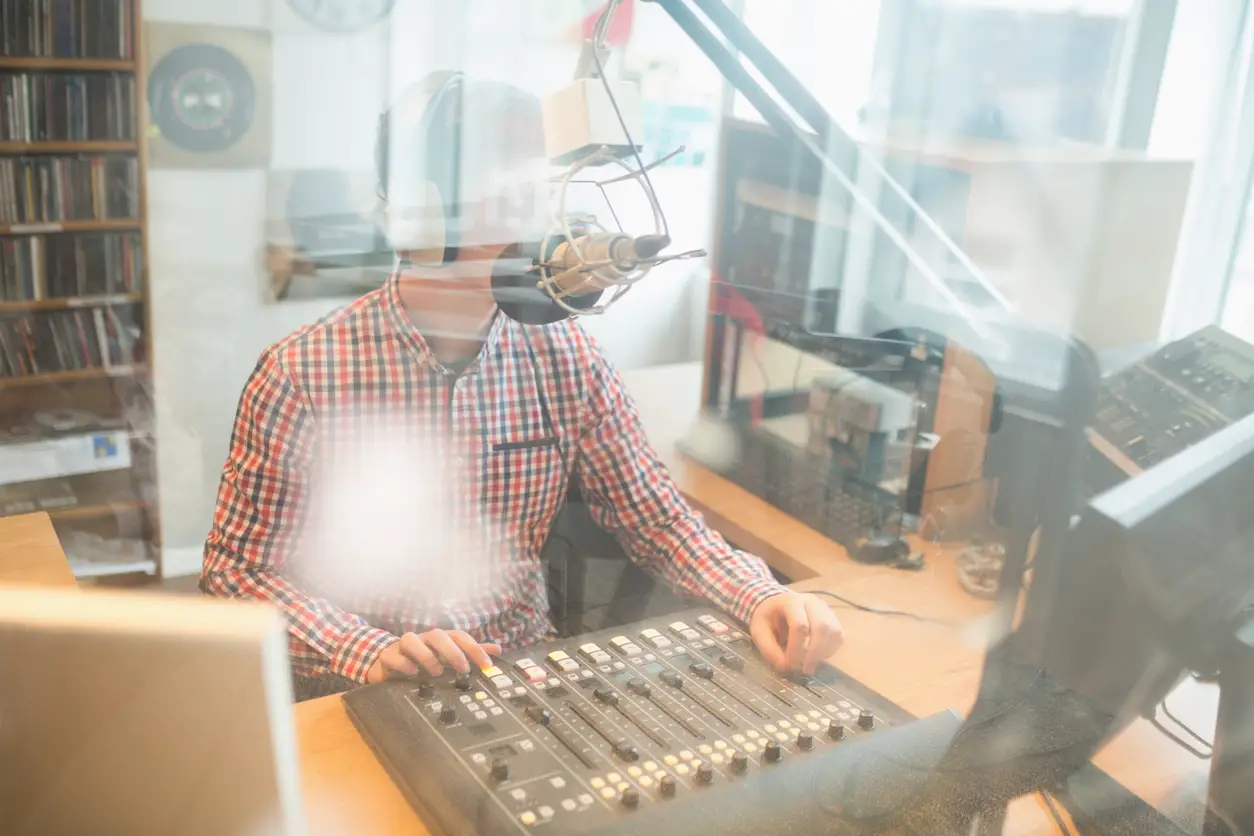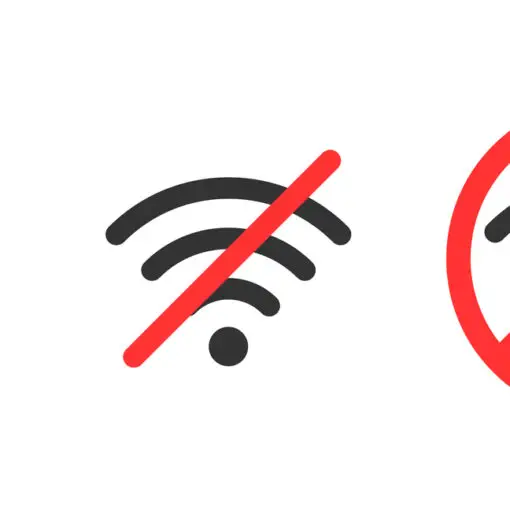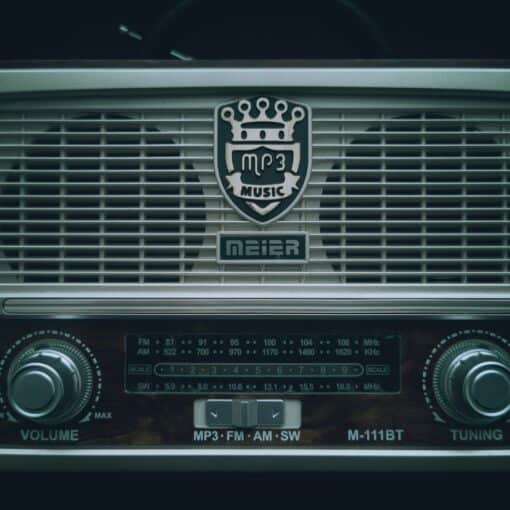Ham radio, also known as amateur radio, is a popular hobby that combines people, electronics, and communication. This unique activity allows individuals to connect with others across town, around the world, or even into space, without the need for the internet or cellphones. Ham radio enthusiasts enjoy the social, educational, and practical aspects of this pastime, which has attracted over a million participants worldwide.
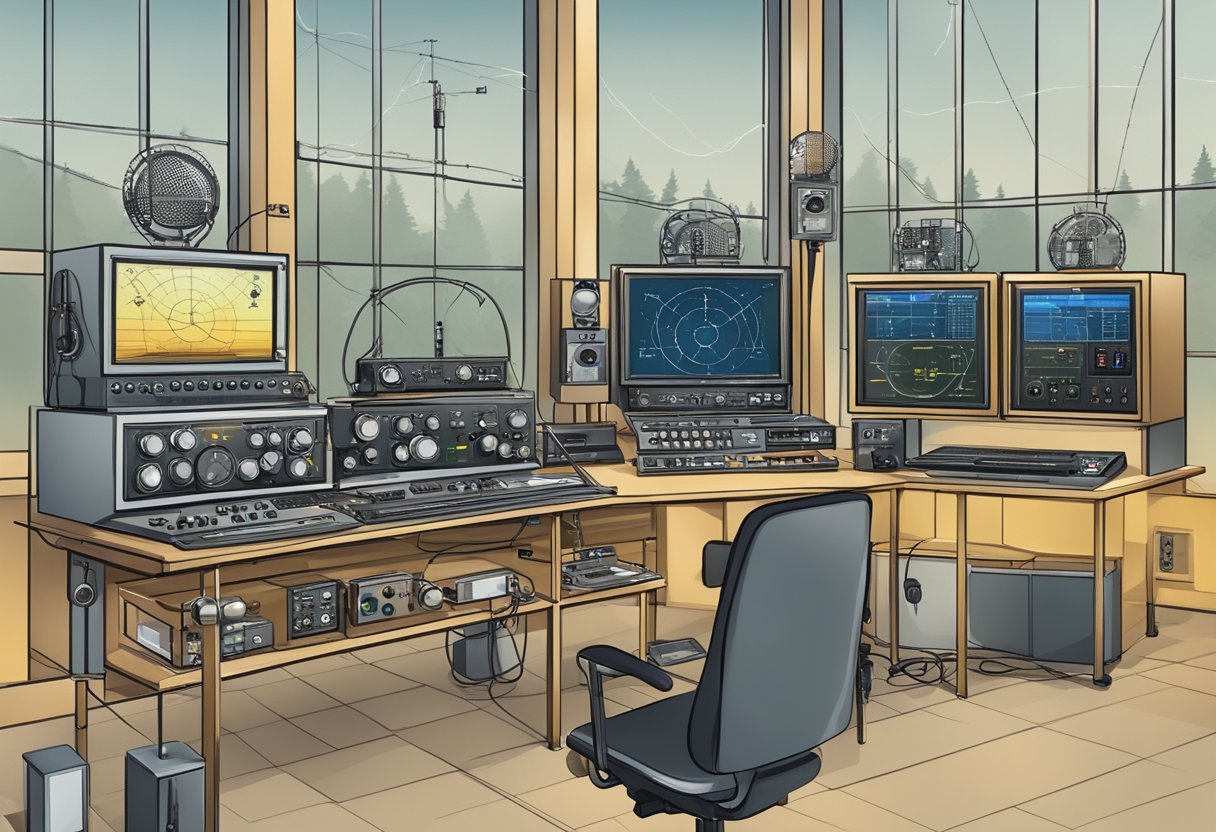

A typical ham radio setup includes key equipment like transmitters, receivers, and antennas, offering a means of short-distance communication where other services might not be available. The hobby also serves as an essential tool during emergencies, providing a unique method for experimentation with radio technology and fostering a sense of community among participants.
Key Takeaways
- Ham radio is a widely popular hobby that combines electronics and communication
- The hobby involves using transmitters, receivers, and antennas for short-distance communication
- Ham radio provides an essential emergency communication tool and fosters a sense of community
Understanding Ham Radio
https://www.youtube.com/watch?v=EwfQ-Zd5-0c&embed=true
Basics of Ham Radio
Ham radio, also known as amateur radio, is a popular hobby and service that involves the use of electronics to communicate over radio frequencies. Enthusiasts use ham radios to talk across town, around the world, or even into space without relying on the internet or cell phones ARRL. It combines the knowledge of communication systems, radio technology, and electronics to explore various aspects of radio communication.
Radio Frequencies
Ham radio operates within specific frequency bands allocated by regulations. These bands are spread across the entire radio frequency spectrum, from High Frequency (HF), Very High Frequency (VHF), to Ultra High Frequency (UHF) Hamtronics. This wide range allows for both short-distance communication in areas where there is no cellular service available and long-range communication, including international contacts through HF bands called shortwave radios.
Some common ham radio frequency bands include:
- HF: 3–30 MHz
- VHF: 30–300 MHz
- UHF: 300–3000 MHz
Different ham radio frequencies have unique characteristics regarding wavelength, energy, and modulation. For example, VHF and UHF bands are suitable for local communication because they have shorter wavelengths and higher frequencies, while HF bands are great for long distances due to their longer wavelengths Radio Fidelity.
Components of Ham Radio
A typical ham radio communication system consists of several components, including transceivers, transmitters, receivers, and antennas GeekPrepper. Some of the essential components are:
Transceiver: A combination of a transmitter and a receiver in a single device, transceivers are the most commonly used ham radio equipment. They can either be mobile transceivers, designed for use in vehicles, or base station transceivers intended for stationary use at home or a field location.
Transmitter: This component generates radio energy and modulates it using either Amplitude Modulation (AM) or Frequency Modulation (FM), depending on the desired transmission mode.
Receiver: The receiver is responsible for demodulating the received signal, extracting the desired information, and converting it back into an audible audio format.
Antennas: A crucial component of any ham radio system, antennas are responsible for capturing the radio frequency signals and converting them into electrical energy (when receiving) and vice versa (when transmitting).
Ham radio operators may also use handheld radios like walkie-talkies for short-range communication, especially during emergency situations or events where other communication systems are unavailable or inefficient.
The hobby of ham radio opens up countless opportunities for enthusiasts to learn about electronics, radio frequencies, and communication systems while providing a valuable service in times of need.
Getting Started with Ham Radio
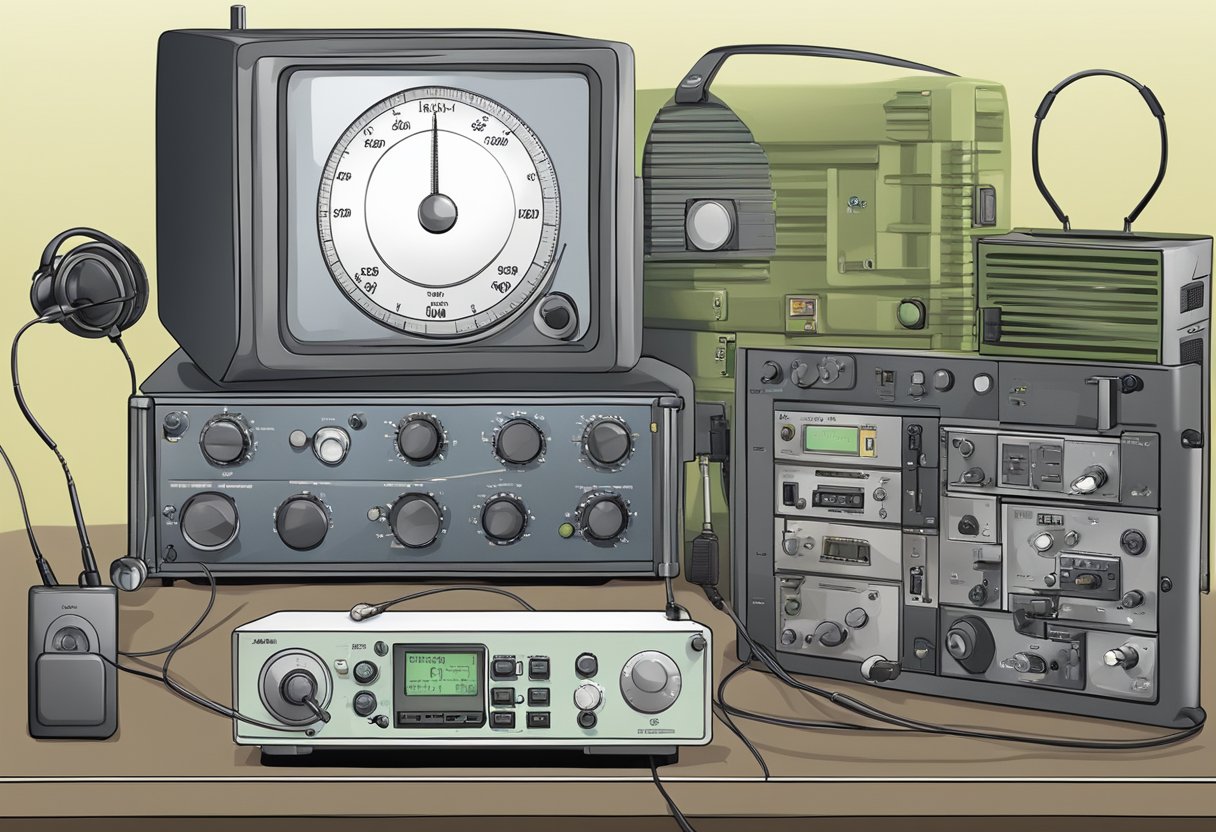

Ham radio, also known as amateur radio, is a fascinating hobby that enables people to communicate locally and globally using wireless technology. This section will help you get started with ham radio by guiding you through acquiring a license and choosing the right equipment.
Acquiring a License
Before you can operate a ham radio, you need to acquire an amateur radio license. This license is issued by the Federal Communications Commission (FCC) in the United States. There are three levels of amateur radio licenses, each with its set of privileges and requirements:
- Technician: This entry-level license allows you access to VHF and UHF amateur bands and some limited privileges on HF bands. It’s ideal for beginners looking to explore local and regional communication.
- General: The next level up, General license holders are granted access to a wider range of HF bands, allowing for long-distance communication. You must pass the Technician exam before taking the General exam.
- Extra: The highest level of amateur radio licensing offers all available privileges on all amateur bands. Candidates must first pass the Technician and General exams before they can take the Extra exam.
The licensing process involves passing a multiple-choice exam administered by Volunteer Examiners (VEs), who coordinate with the FCC to certify amateur radio operators. You can find information on exam dates and locations by visiting the ARRL website.
Choosing Equipment
It’s critical to select the proper amateur radio equipment for your needs and interests. There are numerous brands and models available, with popular manufacturers including Yaesu, Kenwood, and Icom. When selecting equipment, consider the following aspects:
- Frequency bands: Ensure that your chosen radio supports the frequency bands you plan to use based on your license level and interests.
- Portability: Determine whether you need a mobile, portable, or base station radio setup. Portable and mobile radios offer more flexibility, while base station setups often provide increased power and range.
- Ease of use: As a newcomer to ham radio, look for equipment that is user-friendly, with easy-to-access controls and a comprehensive manual.
- Budget: Set a budget for your ham radio investment, keeping in mind that quality equipment can last for years and support your hobby’s growth.
Spend time researching radios and accessories to ensure you invest in a system that meets your needs and helps you fully enjoy your ham radio experience.
The Ham Community
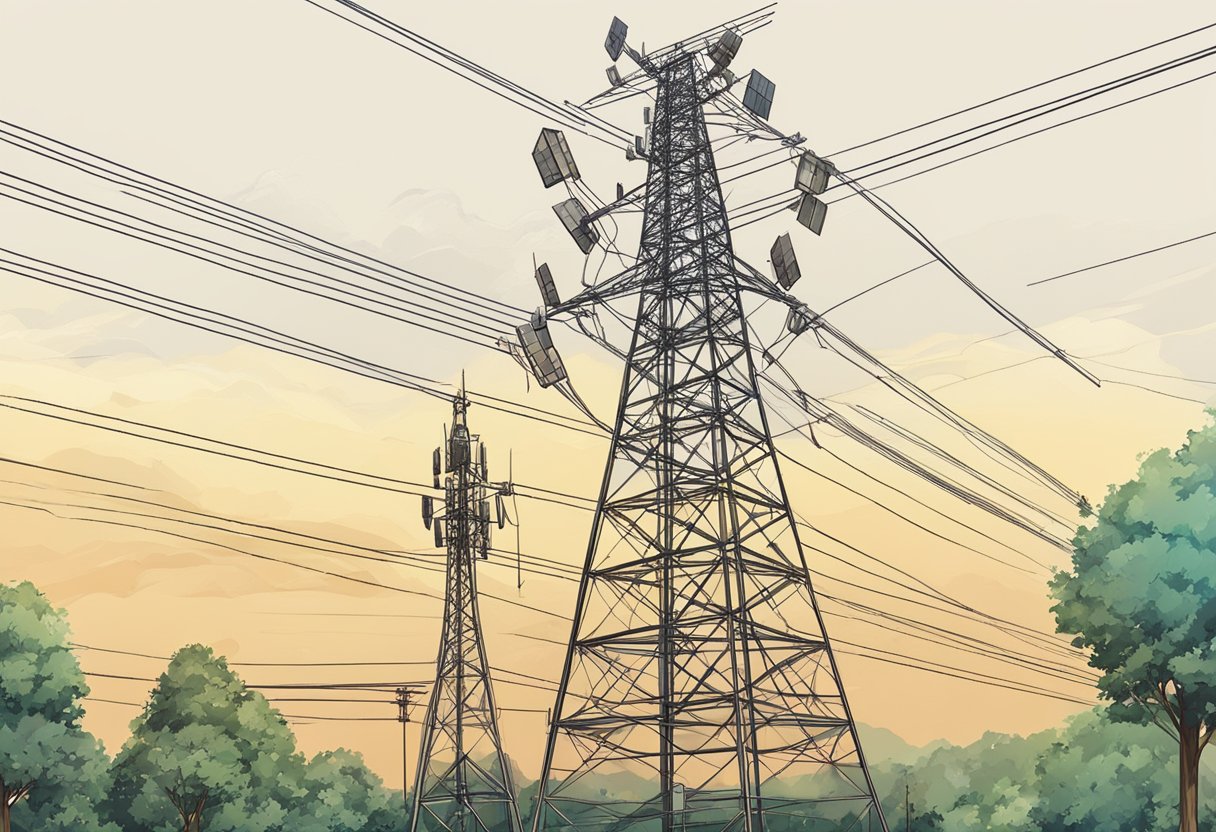

The Role of Hams
Ham radio, also known as amateur radio, is a popular hobby where enthusiasts, often referred to as “hams” or “ham operators,” communicate with one another using radio frequencies. These radio amateurs play an important role in their community by providing emergency communication during natural disasters, participating in local events, and even assisting search and rescue operations. The Ham Community is a platform where hams can connect and collaborate with each other.
In addition to their emergency communication capabilities, hams also contribute to scientific research and advancements in radio technology. Many radio amateurs participate in activities such as satellite tracking, meteor scatter communication, and moonbounce experiments to further their knowledge and understanding of radio communications.
Networking and Friendship
The ham radio community is vast and welcoming, with hams forming friendships and forging strong connections with one another. By joining a local radio club, newcomers to the hobby can gain valuable insight from more experienced operators, as well as have access to shared resources and mentorship. Additionally, social media platforms offer an easy way for hams to network, share information, and learn from one another on a global scale.
Through the process of obtaining their amateur radio licenses, hams also get exposed to a diverse range of people and interests. As a result, ham radio operators often find themselves connected to a supportive and close-knit community, united by a shared passion for radio communication and a desire to learn, explore, and grow together within the hobby.
Ham Radio in Action
Emergency Communication
Ham radio operators play a crucial role in providing emergency communication during disasters and emergencies. When traditional communication systems like the internet and cell phones become unreliable, ham radio takes over to ensure that vital messages can be relayed between first responders, government agencies, and affected communities. The Amateur Radio Emergency Service (ARES) is a volunteer organization that helps to train, organize, and deploy ham radio operators to support emergency communications in times of need.
In recent years, ham radio has been instrumental in response and recovery efforts for major events like hurricanes, earthquakes, and wildfires. With their knowledge of radio frequencies and communication protocols, radio amateurs provide vital channels of communication that can save lives and resources during disasters.
Public Service Broadcasting
Aside from emergency situations, ham radio operators also contribute to public service broadcasting. They assist in organizing and coordinating various community events, such as marathons, cycling races, and parades. With their portable radio equipment and broad understanding of communication systems, hams help event organizers communicate with each other, ensuring smooth and efficient event management.
Additionally, the ham radio community participates in international contests, striving to make the most long-distance contacts within a specified time frame. Such contests help operators refine their skills, sharpen their knowledge, and encourage innovation within the hobby.
Connecting with Satellites
Another fascinating aspect of the ham radio hobby is the ability to communicate with satellites and even the International Space Station. Ham radio operators can use satellite communication systems to exchange messages with other operators across long distances, even on opposite sides of the globe.
The amateur radio community has developed its own network of satellites, known as Oscar satellites, to facilitate these global connections. Through these satellites and the cooperative efforts of radio amateurs worldwide, personal communication and experimentation can reach new heights – quite literally.
In summary, the ham radio hobby demonstrates the versatility and resilience of radio communication in various scenarios. From responding to emergency situations and providing public service broadcasting to connecting with satellites and enhancing global communication, ham radio operators showcase the ever-evolving potential of this engaging hobby.
Regulations and Compliance
Federal Communications Commission (FCC)
The Federal Communications Commission (FCC) is the regulatory body responsible for overseeing amateur radio operations in the United States. Ham radio operators must obtain an FCC license to operate legally within the country. The FCC ensures that amateur radio operators adhere to the rules and regulations governing their respective operations.
Bandwidth Regulations
Ham radio operators have access to specific frequency allocations designated for amateur radio use. These frequency allocations are separated into various bands, each with its own set of rules and regulations. Ham radio operators must be knowledgeable about the allowed frequency bands and transmit only within those allowed bands to avoid interfering with other radio services.
Call Signs
A call sign is a unique identifier assigned to each amateur radio operator and serves as a way to establish communication and indicate an operator’s compliance with the FCC rules. The call signs follow a specific format, which helps other operators identify the license class and geographic region of a transmitting station. It is the responsibility of each ham radio operator to transmit their call sign at the beginning and end of a communication exchange, and at regular intervals during a conversation, according to FCC regulations.
The Science Behind Ham Radio
Understanding Electromagnetic Radiation
Electromagnetic radiation plays a crucial role in ham radio operations. Radio waves, a type of electromagnetic radiation, are responsible for carrying signals over long distances. Ham radio operators utilize various frequencies of radio waves to communicate with one another. These frequencies range from shortwave to very high frequency (VHF) and ultra high frequency (UHF) bands, allowing transmissions to cover both local and global distances.
Principles of Radio Technology
Ham radio technology relies on several key principles. Continuous wave (CW) operation, also known as Morse code, is a popular communication method among radio enthusiasts. This technique involves modulating the amplitude of radio waves to form a signal. Another common mode of operation is single sideband (SSB), which selectively suppresses one sideband of a modulated carrier wave to reduce bandwidth usage and improve transmission efficiency. Ham radio operators are required to understand these principles and pass exams to obtain a license for radio operations.
Wireless Experiments
Wireless experiments play a major role in the advancement of the ham radio hobby. Amateur radio operators often conduct experiments to enhance the capabilities and understanding of radio wave propagation, antennas, and signal processing. For example, tropospheric ducting is a phenomenon where radio waves travel much farther than usual due to specific atmospheric conditions. Investigating such phenomena helps improve radio technology and promotes scientific discovery.
Mobile Units and Hand-held Radios
Mobile units and hand-held radios have made ham radio more accessible to a wider audience. These devices enable users to communicate while on the move, promoting a dynamic and versatile hobby. Hand-held radios typically operate on VHF and UHF bands, providing communication over shorter distances, while mobile units are capable of operating on multiple bands, facilitating regional and global communication. As mobile and hand-held radios become more advanced, they continue to expand the possibilities for amateur radio operators.
Frequently Asked Questions
What is the cost of starting a ham radio hobby?
The cost of starting a ham radio hobby can vary depending on the equipment and accessories needed. Generally, beginners can expect to spend anywhere from $100 to $500 on a basic setup, including a handheld transceiver, antenna, and power supply. However, as you become more advanced in the hobby, more sophisticated equipment may be desired, potentially increasing the overall cost.
How do I obtain a ham radio license?
To obtain a ham radio license in the United States, individuals must pass a written examination administered by the Federal Communications Commission (FCC). There are three levels of licenses: Technician, General, and Amateur Extra, each requiring a separate exam. To prepare for the exams, there are study materials available, as well as online courses and local amateur radio clubs that offer classes and mentoring. Once you have successfully passed the exam, you will be issued a call sign by the FCC, granting you permission to operate on designated amateur radio frequencies.
What are the common ham radio frequencies?
Ham radio operators are allocated specific portions of the radio frequency spectrum, known as bands. The most common ham radio frequencies include:
- VHF (Very High Frequency): 144-148 MHz
- UHF (Ultra High Frequency): 420-450 MHz
However, there are numerous other allocated bands ranging from low-frequency (LF) to extremely high frequency (EHF). Each band has its own characteristics and applications, including local and worldwide communications, depending on factors such as propagation conditions, time of day, and solar activity.
What kind of equipment is needed for ham radio?
For a basic ham radio setup, the main equipment needed includes a transceiver (a device that can both transmit and receive radio signals), an antenna, and a power supply. Other accessories that may be useful include a microphone for voice communications, headphones, or a speaker for listening, and an SWR (standing wave ratio) meter to help optimize antenna performance. As you progress in the hobby, you may choose to invest in more advanced equipment, such as amplifiers, digital mode interfaces, and software-defined radios (SDRs).
What do ham radio operators discuss?
Ham radio operators discuss a wide range of topics, ranging from local news and events to technical discussions about radio equipment and operating techniques. Conversations can take place during casual contacts, called “ragchews”, or during more structured on-air events such as nets (scheduled meetings) and contests. Additionally, ham radio operators play a significant role in emergency communications and disaster relief, partnering with organizations like the ARRL’s Amateur Radio Emergency Service.
Is the ham radio community still active and growing?
Yes, the ham radio community is still active and growing. According to the FCC’s records, there are over 800,000 licensed amateur radio operators in the United States, with new enthusiasts joining the ranks each year. The hobby maintains its appeal due to the camaraderie among operators, the ongoing development of new radio equipment and technologies, and the vital role ham radio plays in emergency communications.

